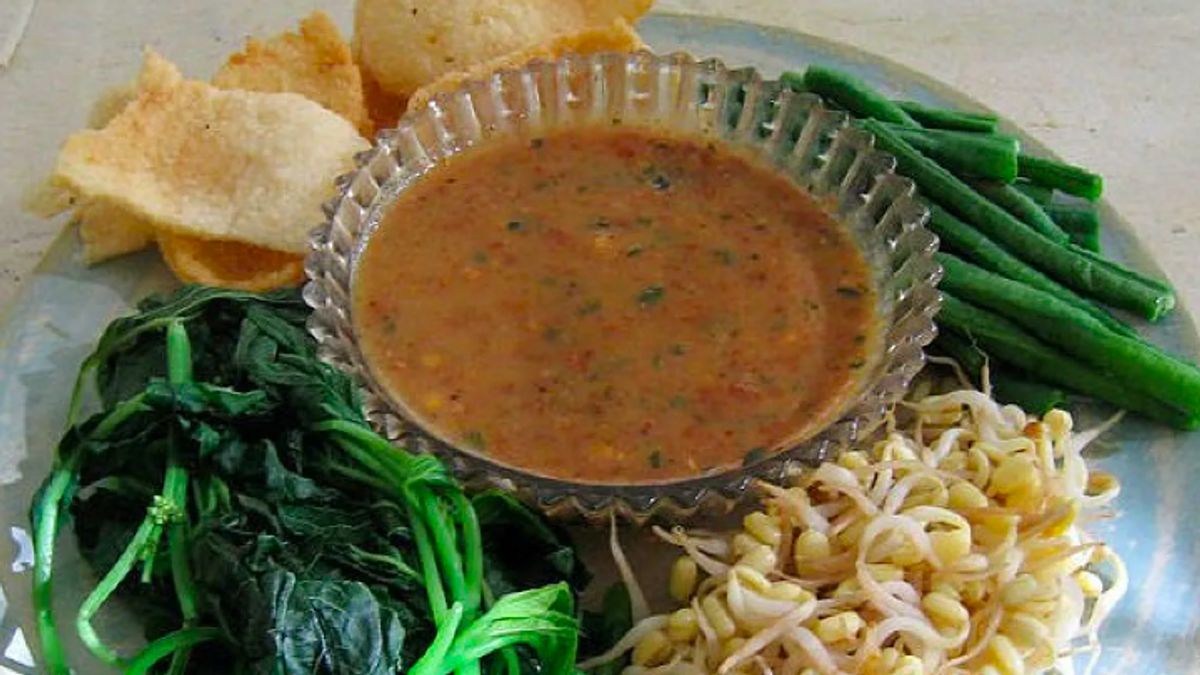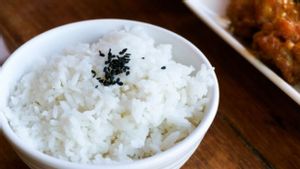JAKARTA - Indonesia has a variety of fresh and delicious vegetable dishes spread across various regions. One of the characteristics of this vegetable dish is the use of peanut sauce, such as karedok and pecel.
Although at first glance they look similar, karedok and pecel have quite significant differences, both in terms of ingredients, spices, and how they are served. So, what are the differences between these two Indonesian foods? Here is the review as quoted by Antara.
1. Origins
Karedok is a traditional Sundanese food from West Java, known for its fresh and authentic taste. This dish is often found in the Priangan region such as Bandung, Garut, Sukabumi, and Bogor, and is the choice of Sundanese people to enjoy vegetables with unique peanut sauce.
Meanwhile, pecel comes from East Java and Central Java, and is a food that is commonly found in various food stalls and restaurants in these two provinces. Pecel has become a favorite food because of its delicious taste and distinctive peanut sauce.
2. Types of Vegetables
The striking difference between karedok and pecel can be seen from the vegetables used. Karedok uses raw vegetables such as long beans, bean sprouts, basil leaves, cabbage, and cucumbers that are served uncooked after being washed clean. These vegetables provide a crunchy and fresh sensation when consumed.
On the other hand, pecel uses vegetables that are generally boiled first, such as spinach, long beans, kale, and cassava leaves. This boiling process makes the vegetables in pecel softer and reduces the bitter taste of some types of vegetables.
3. Peanut Sauce
Although both use peanut sauce, karedok and pecel have different compositions and flavors. Karedok seasoning tends to be stronger because it uses ingredients such as aromatic ginger, chili, shrimp paste, and tamarind water. This mixture of spices provides a spicy, fresh, and slightly sour taste typical of Sundanese food.
On the other hand, pecel seasoning usually consists of peanuts pounded with chili, garlic, brown sugar, and a little tamarind water. It tastes sweeter and less spicy than karedok seasoning. Some areas also add lime leaves for a more fragrant aroma.
4. Serving
Karedok is usually served directly after the vegetables are mixed with peanut sauce. Fresh raw vegetables combined with peanut sauce produce a crunchy texture and a biting taste. This dish is often served as an appetizer or side dish with rice.
While pecel is served by pouring peanut sauce over boiled vegetables. This dish is usually served with warm rice and is often accompanied by additional side dishes such as fried tempeh, tofu, or peyek. The more complete presentation of pecel makes it more suitable as a main dish.
5. Taste and Flavour
The taste of karedok tends to be spicier and sharper due to the use of fresh aromatic ginger and raw vegetables. The aroma of aromatic ginger in karedok is also stronger, which is one of the characteristics of this dish.
While pecel has a sweeter and less spicy taste. The aroma of pecel seasoning also tends to be lighter than karedok.
Although both use peanut sauce, karedok and pecel offer different taste experiences. Karedok is fresher and crunchier with a typical Sundanese spicy taste, while pecel is softer and sweeter, suitable for the tongues of the people of East Java and Central Java.
For Indonesian cuisine lovers, enjoying these two dishes is certainly a fun way to explore the richness of Indonesian culinary flavors and traditions.
The English, Chinese, Japanese, Arabic, and French versions are automatically generated by the AI. So there may still be inaccuracies in translating, please always see Indonesian as our main language. (system supported by DigitalSiber.id)









